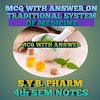HISTORY OF MICROBIOLOGY (PART 2)
Working on souring of wine
and beer, found that alcohol spoilage is due to the growth of undesirable
microorganisms, while the desirable microorganisms produce alcohol by a
chemical process called “fermentation”. He showed that wine did not spoil, if
it is heated to 50-600C for a few minutes. This method is called
“pasteurization”, now
widely used in dairy units to kill pathogenic microorganisms in milk.
Robert Koch (1843-1910): He was a German physician known as “Father
of practical bacteriology” He
perfected the technique of isolating bacteria in pure culture. first isolated the
bacillus anthracis, the causative agent of anthrax.
CLICK BELOW TOPIC TO READ
THE
GOLDEN ERA:-
The Golden age of microbiology began with the work of Louis Pasteur and
Robert Koch who had their own research institute.
LOUIS
PASTEUR: He was a professor of chemistry at
the University of Lille, France.“Father of modern Microbiology”, as his
contributions led to the development of microbiology as a separate scientific
discipline.
The concept of spontaneous generation was
finally put to rest by the French chemist Louis pasteur in an
inspired set of experiments involving a goose necked flask. When he boiled
broth in a flask with a straight neck and left it exposed to air, organisms
grew. When he did this with his goose-necked flask, nothing grew. The S-shape
of this second flask trapped dust particles from the air, preventing them from
reaching the broth. By showing that he could allow air to get into the flask
but not the particles in the air, Pasteur proved that it was the organisms in
the dust that were growing in the broth.
Pasteur, thus in 1858 finally resolved the
controversy of spontaneous generation versus biogenesis and proved that
microorganisms are not spontaneously generated from inanimate matter but arise
from other microorganisms.
Contribution of Louis
Pasteur:
He coined the term
“microbiology”, aerobic, anaerobic.
He demonstrated that
anthrax was caused by bacteria and also produced the vaccine for the disease.
He developed live
attenuated vaccine for the disease.
He also introduced the use of solid culture media
in 1881 by using gelatin as a solidifying agent. In 1882 he discovered Mycobacterium tuberculosis which is popularly called
as Koch’s bacillus.
He discovered vibrio cholera, the causative agent
of cholera disease.
Koch did a series of experiment to fulfill the
criteria laid by his teacher henle to establish the causative role between a
particular micro-organism and a particular disease. They are popularly known as
Koch’s postulates.
Koch’s four
postulates are:
· The
specific organism causing the disease can be found in sick individuals but not
in healthy ones.
· The
organism can be isolated and grown in pure culture in the laboratory.
· The
organism must cause the disease when it is introduced into a healthy
susceptible animal.
· The
organism must be recovered from the infected animal and shown to be the same as
the organism that was introduced.
An additional criterion introduced is that
specific antibodies to the causative organism should be demonstrable in patient
serum.
CLICK BELOW TOPIC TO READ
















0 Comments
Please do not enter any spam link in the comment box.